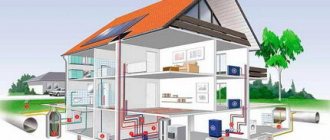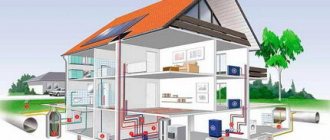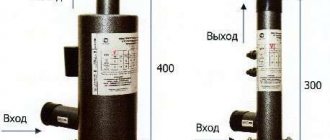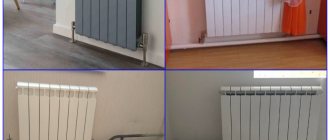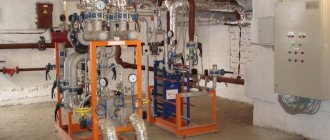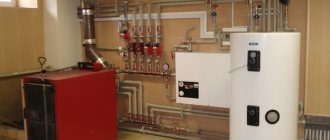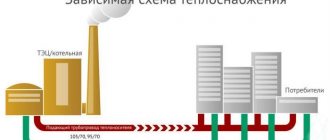Few country or private houses can boast of being connected to a main heating system.
This is what an electric boiler for heating a private house looks like
In the vast majority of cases, concerns about choosing and designing heating systems in such dwellings fall on the shoulders of their owners. There are many options to choose from, but many of them also depend on external conditions. Thus, the lack of gas supply does not allow the construction of a heating system based on gas boilers.
Systems based on liquid fuel require compliance with strict safety standards and special qualifications during installation and operation. In this case, a smart choice for heating a private home would be to purchase an electric boiler. Modern industry produces a lot of modifications of such devices for any operating conditions.
Basic elements of electric boilers
Regardless of the power of the electric boiler and its main purpose, it consists of the following main elements:
- The housing, which serves as a container for all components.
- A heat exchanger, which serves to transfer heat from the heating element to the coolant tank,
- Control, control and adjustment units.
A number of models of electric boilers may also have built-in circulation pumps to ensure the movement of coolant, and valves that redirect its flow.
A modern electric boiler is a high-tech device that heats flowing water with maximum efficiency, while operating in a completely autonomous mode. Even a child can operate such equipment - it is so safe and simple. Also, modern electric boilers have a fairly high efficiency, which will allow you to avoid unnecessary bills for wasted electricity.
water supply distribution
There is a great variety in the design of such electric heating devices. They come in a variety of shapes, with wall or floor placement.
Electrode
Considering the quality/price ratio, electrode options will look most advantageous. The basic principle of operation is based on the electrical conductivity of liquid media. This allows for significant savings and high heating efficiency.
To overcome power limitations, equipment can be installed in cascade. The efficiency of electrode models reaches 95%. However, despite all the positive aspects, we highlight a number of disadvantages:
- Electrodes need annual descaling or replacement
- Efficiency drops significantly when using distilled water
- To prevent electric shock, the chassis must be properly grounded.
Operating principle of an electric boiler
Almost all electric boilers operate on the same principle: a heating element is placed in the heat exchanger, which, after applying electric current to it, begins to generate heat. The coolant entering the heat exchanger (usually simple tap water, and in closed heating circuits water with special additives or antifreeze) is heated after contact with the heating element.
By the way, water can be heated not only by a traditional heating element (that is, a heating coil enclosed in a protective casing), but also by induction or electrode methods. However, it is electric boilers with heating elements that are most widespread, both among imported and domestic models.
heating circuit
The power supply for heating boilers is also very diverse. They can be powered from standard household 220 volts, or they can have industrial power supply with three phases at 380 volts. There are even modifications that are powered by batteries.
Video
https://youtube.com/watch?v=HR5GVdNN5Tk
https://samelectrik.ru/kak-podklyuchit-elektricheskij-kotel-otopleniya.html
https://teplospec.com/elektricheskoe-otoplenie/pravilnaya-ustanovka-elektrokotla-otopleniya-poshagovoe-rukovodstvo-i-instruktsiya-po-montazhu.html
https://remoo.ru/kommunikacii/skhema-otopleniya-2-h-ehtazhnogo-chastnogo-doma
What's bad and what's good about electric boilers?
The undoubted advantages of electric boilers designed for heating private houses include:
- Very simple installation, which is accessible even to untrained users.
- If there is good electrical wiring in the house that can withstand the required current, such a boiler does not require additional electrical work. The water distribution when installing an electric boiler is also extremely simple.
- There is no need to install such a boiler in a separate room. The safety measures during its installation are quite gentle and it can be located in any utility room.
- Heating boilers that run on electricity differ better from their gas and solid fuel counterparts in weight and size.
- Such boilers are very easy to maintain and do not require constant cleaning and routine maintenance.
- The electric boiler does not emit combustion products and is an absolutely environmentally friendly device.
- The efficiency of modern electric boilers reaches 98 percent, which allows you to save on heating.
But the operation of electric heating boilers also has some disadvantages:
First of all, a boiler that runs on electricity is very critical to the quality of the electrical wiring in the house. Installing such systems in old buildings may require additional costs for installing electrical wiring of the required cross-section.
electric boilers
In some cases, the energy consumption of a heating boiler can lead to additional costs, especially in areas with high electricity rates.
Using double tariff
When using an electric boiler as the main source of thermal energy, you can save on bills by installing a two-tariff meter.
There is a special electricity metering system in which at night the tariffs for electricity consumption are reduced (up to 4 times). This is a good way to reduce costs, but you will have to slightly change the operating mode of the boiler.
At night, water is heated, which maintains its temperature while in a thermally insulated container. During the day, hot water is used for household needs, and at night its supply is replenished again.
It is necessary to take into account that this option is only good for double-circuit boilers that simultaneously heat both the coolant and hot water. For single-circuit models, this method gives too little effect, and given the high cost of the meter, there may be no savings at all. In addition, tariffs differ in different regions, therefore, before deciding to use a two-tariff meter, it is necessary to calculate the possible savings and decide whether this idea makes any sense.
How to choose an electric boiler for heating a private house and calculate the required power.
In order to correctly choose an electric boiler model for heating and hot water supply to your home, you first need to determine the required power of the electric boiler. There are both modest wall-mounted electric boilers with a capacity of 2.5 kilowatts and stationary installations, the effective power of which is measured in tens of kilowatts.
To calculate the required power of an electric boiler, you can use a fairly simple formula - divide the area of the heated premises by 10. The resulting figure will show the required power of the electric boiler in kilowatts. So, if you plan to heat a house with an area of 90 square meters using an electric heating device, then the minimum required power of the electric boiler will be 9 kilowatts.
Factors such as the material from which it is built, the degree of insulation and external climatic conditions will significantly affect the energy consumption figure for electric heating of premises. All this can make significant adjustments to the required power. Automating the heating process can also significantly reduce energy consumption - maintaining several temperature modes, automatically switched by timer. In this case, the heating will not provide maximum heating during your absence, but will only maintain the minimum required temperature level.
Cost of electric boilers
The price range for electric heating boilers is as wide as their model range. The price of such devices depends on both the power and the functions implemented. In addition, the final cost of installing an electric heating system is significantly influenced by the purchase of additional equipment.
A small wall-mounted device costs several thousand rubles, which can provide an acceptable temperature in a small country house, but for an apartment building the price of such equipment will already be several tens of thousands of rubles.
Power Supply Requirements
The rated power of electric boilers for a private home ranges from 1.5 to 36 kW.
Such a consumed load on the electrical network requires a dedicated line to connect the converter.
The power cables to it are laid directly from the metering device (electricity meter). For emergency or scheduled generator shutdown, automatic switches are used, which in parallel act as a fuse in the event of a short circuit.
It is possible to connect models with a power of up to 9 kW to a single-phase network; more powerful equipment operates on three phases.
Please note: the boiler must be connected to a grounded electrical network
How to install an electric boiler in a private house yourself (diagram)?
Modern electric boilers, despite all their high-tech, are quite simple devices to install. A schematic diagram of the installation of a typical electric heating boiler is shown in the figure.
electric boiler installation diagram, necessary system elements
However, as the design of the boiler becomes more complex and additional circuits are included in the heating system, the installation of such devices also becomes more complicated. Developed systems include not only heating circuits (of which there may be several according to the number of rooms in the house), but also a hot water supply circuit. Each circuit can be equipped with individual temperature sensors, drain and shut-off valves, an inlet filter for coolant water, and circulation pumps.
Therefore, the installation of a heating system based on an electric boiler in a private house must begin with drawing up a detailed project. The project must reflect the required power of heating electrical equipment, calculate the required number and length of pipelines for organizing the circuits of heating and hot water supply systems, as well as all peripheral equipment.
Important!!! If you start installing a heating system without first assessing power consumption and developing a project, you may make a critical mistake and end up with either a cold house or excessive electricity consumption. In this case, you are unlikely to be able to save money ! Any mistake in calculations will hit your pocket hard!
After drawing up the project and calculating the power, the power supply system is reviewed - if necessary, new wires are laid, and a separate emergency switch is installed in the distribution panel.
In the future, the installation of the heating and water supply system is carried out according to the general rules for the construction of such systems. When installing yourself, at least at the stage of calculation and drawing up the project, we recommend that you take advantage of specialist consultations.
Cost of connecting an electric heating boiler
Connection prices depend on the amount of work that needs to be done, the region and the company/master. In Moscow and the Moscow region, the cost of work averages 4,200-12,500 rubles, in St. Petersburg - 3,900-8,000 rubles, and in the regions - 3,500-7,000 rubles. The price includes installation and connection exclusively of an electric boiler, less often - an electric boiler and 1 radiator.
The cost of connecting other elements of the heating system such as an expansion tank, circulation pump, indirect heating boiler or heated floors is calculated separately and can amount to another 2-5 thousand rubles. The average time to complete the work is 2-4 days.
Instructions BoilersElectric boilers
Infrared heating equipment
To heat your country house with electricity, you can use modern infrared heating systems. For their operation, the principle of wave energy transfer over a certain distance is used.
Everything happens as follows. The emitter converts electrical energy into an infrared wave and transmits it. The waves move until they hit any opaque surface.
The temperature distribution when using infrared heating is much more comfortable for humans than when using traditional heating methods
Here they are converted into thermal energy, heating the body that they meet on their way. An object heated in this way, be it large furniture, a floor or a wall, begins to release heat into the atmosphere, thereby heating the air in the room.
In this way, the room is heated as uniformly as possible, and the temperatures are distributed in the most comfortable way for a person. At the same time, there is practically no energy loss, which determines the high efficiency of infrared heaters.
They are available in various versions. Especially popular is a special infrared film with carbon emitters sealed inside it. It is used to install a heated floor system and can be used on the ceiling and walls. The film is covered with any finishing material, which does not affect its properties.
The thickness of the infrared film is small, it is invisible under any coating. The system is moisture resistant and is not afraid of dynamic loads. Subject to dismantling and subsequent use.
You can find infrared heaters on sale; there are both regular ones and those made in the form of plates of various sizes. They are also designed for mounting on walls or ceilings. True, in this case we are talking more about additional heating than about the main one.
In terms of efficiency, infrared equipment surpasses all known electric heating systems. This is explained by the fact that it manages to heat the room very quickly, after which the automatic control unit periodically turns the device on/off, maintaining the desired temperature.
The disadvantages of infrared systems include the strict directionality of heating. The device heats only the area located in front of it. Therefore, for example, infrared film is laid around the entire perimeter of the floor or ceiling.
Another disadvantage is the fairly high cost of such equipment, especially if you need to purchase material for installing a heated floor or a PLEN system for the ceiling. However, we must admit that such investments pay off fairly quickly.
Modern infrared heaters can be made in the form of a decorative panel
Pipes
What kind of pipes can be used for installation of filling and connections to the boiler and heating devices?
Low operating temperatures and moderate operating pressure allow the use of all types of metal, high-temperature plastic and metal-plastic pipes. The only thing that needs to be mentioned separately is the use of polypropylene:
Pipes must be reinforced with aluminum foil. It will reduce the elongation of the pipeline when heating water in the circuit;
The use of polypropylene pipes without reinforcement for heating needs. The heated spills lengthened and went in waves.
On long straight sections of pipes, expansion joints are needed - U-shaped, ring or bellows. They will not allow the bottling or riser to bend when heating water in the pipes;
Ring and bellows expansion joints for polypropylene pipelines.
- Straight sections are fastened movably with sliding clamps;
- When pipes are laid hidden, gaps remain at the ends of the grooves. They will allow the pipe to lengthen without destroying the groove seal.
Combined models of units
The advantage of multi-fuel boilers is versatility. The remaining pros and cons of the units are inherited from the corresponding heat generators - gas, electric or wood. In installations it is customary to combine energy carriers in the following combinations:
- firewood - electricity;
- gas - electricity;
- coal - firewood - gas;
- diesel - wood - electricity - gas.
Electric-gas (left) and coal-gas (right) boiler “Zhitomir”
The main idea of a combined heater is the continuous provision of thermal energy to the home with automatic or manual switching to another fuel if necessary. But the combination of several combustion chambers and electric heaters gives rise to a number of disadvantages:
- the size and weight of boilers increases, the price increases;
- The efficiency of using all types of fuel is reduced;
- repair and maintenance becomes more difficult.
The best combination is a combination of a TT boiler with electric heating elements. The heaters are built into the boiler tank and do not increase the original dimensions of the product. If you take an electric gas installation, you will need a permit and a design for connection to the main line.
